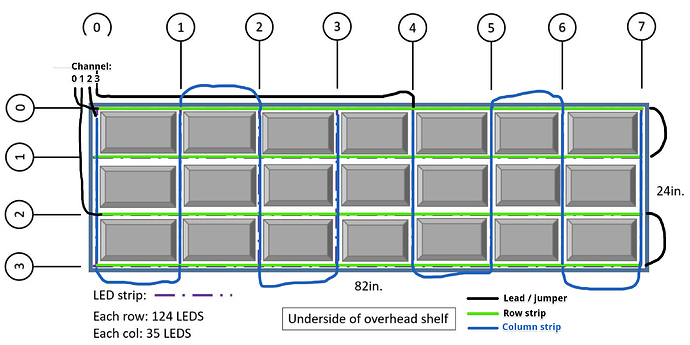I am installing a grid of WS2812b strips underneath a shelf over my office desk. I just started to think about the strategy for this. I’m curious to see what your thoughts are about the implementation of this from the controller to the wiring and the code.
I already ordered a PixelBlaze V2 and the output expander, as well as the sensor breakout and a whole bunch of LED strips and wiring. I’m already comfortable with splitting/soldering the strips and general use of the PixelBlaze controller.
Between each strip will be acoustic foam panels, with a 1/2in gap to allow the light to shine down between the foam panels. I’m hoping to animate this grid as if it were a section from a huge 2D panel. This would provide a relationship between the pixels such that an animation, like an underwater shimmer, or moving shapes would have continuity across the entire grid.
How should I start to go about this?
The first pressing question is how to wire up the strips? Should they all be in series on the same data line, or should I use the output expander to break them up into separate data lines? If they are all on the same line, how to I deal with the data line voltage drop?
Here is a diagram of the layout (Updated with foam panels shown)


